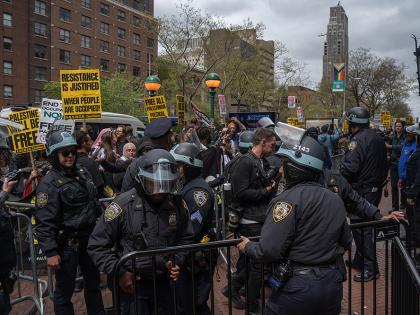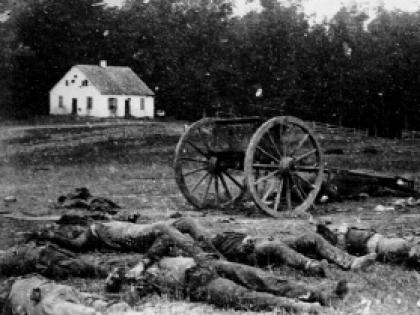When Radcliffe College students once got ready to play basketball or field hockey, they put on uniforms of knee-length skirts or shorts, with tights underneath. Even these images seem revolutionary compared to the photos on display at the Schlesinger Library’s exhibition “Playing Fair? Title IX at 45.” In the journal article “Pantaloons, Bloomers, and Shorts,” women wear long-sleeved dresses with either loose pants or bloomers underneath.
The exhibit’s topic complements the conference “Game Changers: Sports, Gender, and Society,” which was held at the Radcliffe Institute for Advanced Study in April, coinciding with the forty-fifth anniversary of Title IX’s passage. The exhibit uses Title IX as a lens to tell a focused narrative about women in sports, curator Susan Ware explains. She drew on the Schlesinger Library’s vast collection for all of the pieces in the exhibit—except for one “I love Title IX” refrigerator magnet that Ware herself donated.
The text of Title IX is printed on one of the exhibit’s walls. But the wall is mostly empty—the law is one sentence, prohibiting discrimination based on sex in educational programs that receive federal funding. The law has had many different applications through the years, but when it was first authorized in 1972, people had “no idea that Title IX would affect sports,” Ware says. The close association eventually arose because sports provided a “clear example of discrimination.” There were concrete examples of how male and female athletes were treated differently; for example, men’s sports teams had vastly larger budgets than women’s. After Title IX passed, one proposal for reforming the budgets was to “split the resources 50/50” between men’s and women’s teams, Ware says, but “nobody really liked that.” Instead, she explains that budgets were to be proportional to each gender’s enrollment in the school. Since “men were the majority of students,” she says, they could keep the majority of sports funding. But now that women make up a more equal share of student bodies, they have received more funding.
Before Title IX, it was difficult for women to field their own varsity, as opposed to intramural, sports teams, and to secure funding for those teams. On display is a 1976 letter in which Ann Roytek, a Mattoon (Illinois) Senior High School student, explains to women’s-rights activists Bernice Sandler and Margaret Dunkle how her school prohibited her creation of a letterman’s club for women receiving letters in athletics—even though there was one for men. In many such cases, parents and feminist organizations took action; one photo on display shows a woman winning the “Title IX Break-the-Red-Tape run,” a protest of Title IX’s non-enforcement sponsored by the National Coalition for Women and Girls in Education. They succeeded in establishing more women’s sports teams in schools, producing accomplished female athletes. The exhibit displays Wheaties boxes featuring Joan Benoit Samuelson (an Olympic gold-medalist for marathon running), who had a running scholarship at North Carolina State University and also ran for Bowdoin College, and Amy Van Dyken (a six-time Olympic gold-medalist for swimming), who broke U.S. swimming records at Colorado State University. Other photographs show women playing basketball and participating in athletic classes at West Point—seemingly ordinary images today, but unimaginable just a few decades ago. The exhibit serves to remind visitors that there was strong opposition to funding for women’s teams from male-dominated athletic organizations, and from coaches, Ware notes. One op-ed on display warns, “Title IX threatens football,” arguing that the sport is “a competitive, tough, man’s game—with all due respect to women.”
“I regret not having that experience” of participating in team sports, says Ware, who left school before Title IX helped established women’s teams. She hopes the exhibit will give visitors the opportunity to celebrate the progress achieved, but also to keep in mind that “there is still so more to do.” As shown by a graph in the exhibit, college women still have fewer athletic opportunities than men, despite constituting a greater share of the undergraduate population. For so long, Ware says, “discrimination was there right in front of [us], but it wasn’t called” discrimination—Title IX has named these disparities in resources as discrimination, and provided a legal framework for combating it.
The “Playing Fair? Title IX at 45” exhibit will be on view in the Schlesinger Library through September 15.











